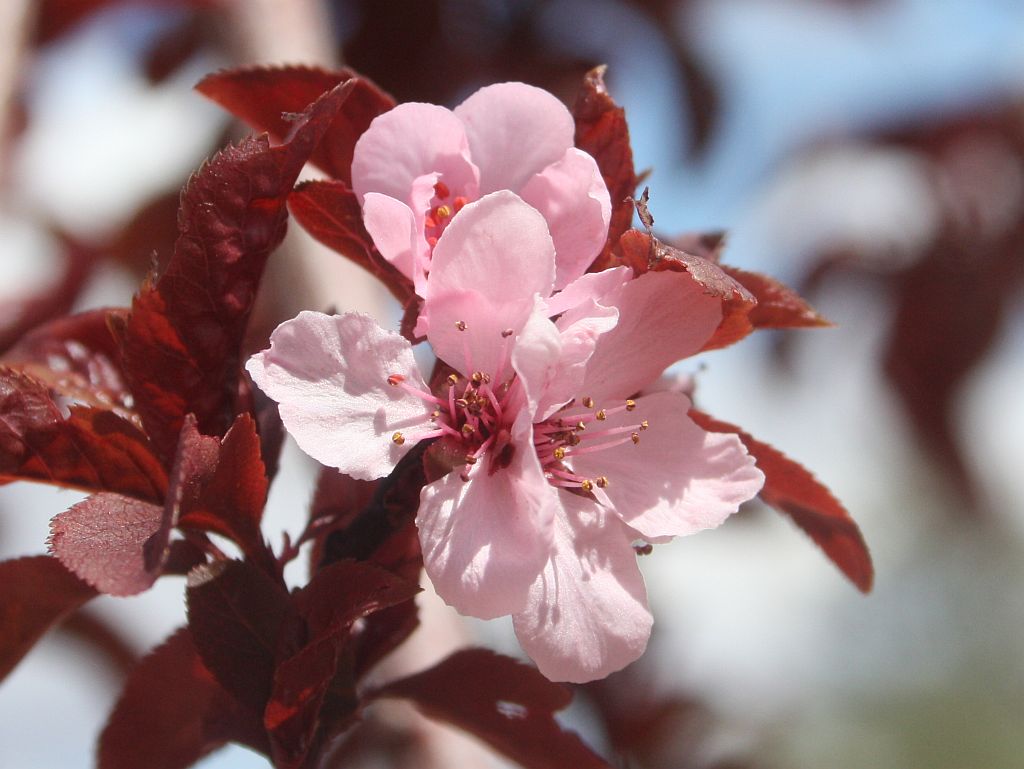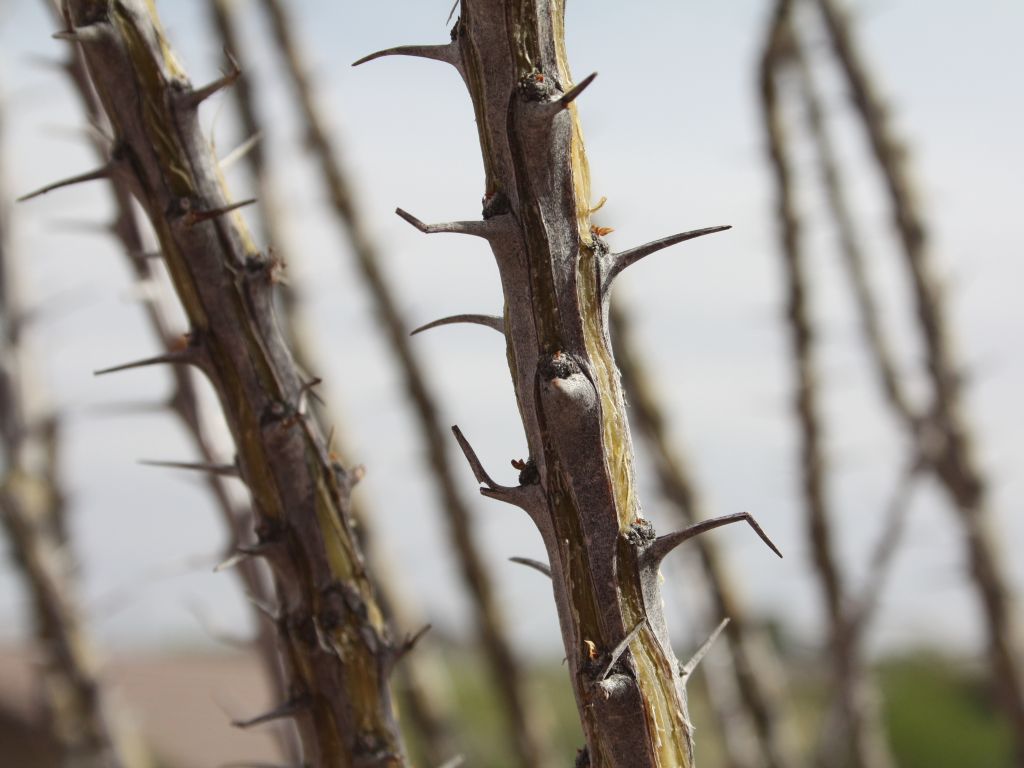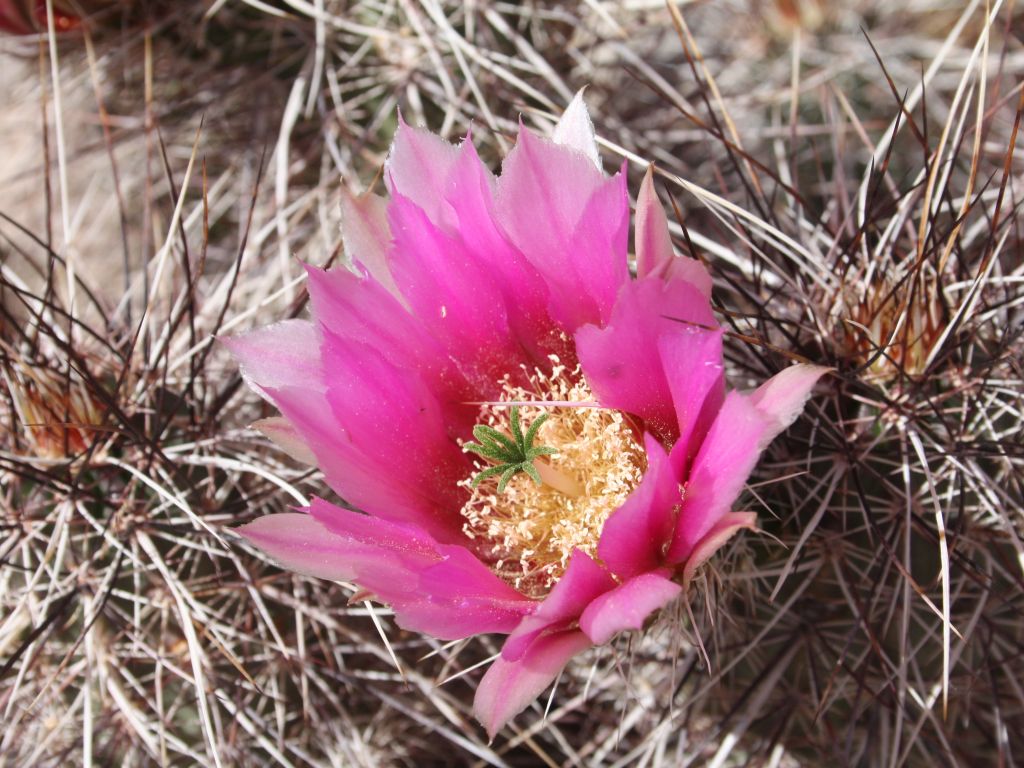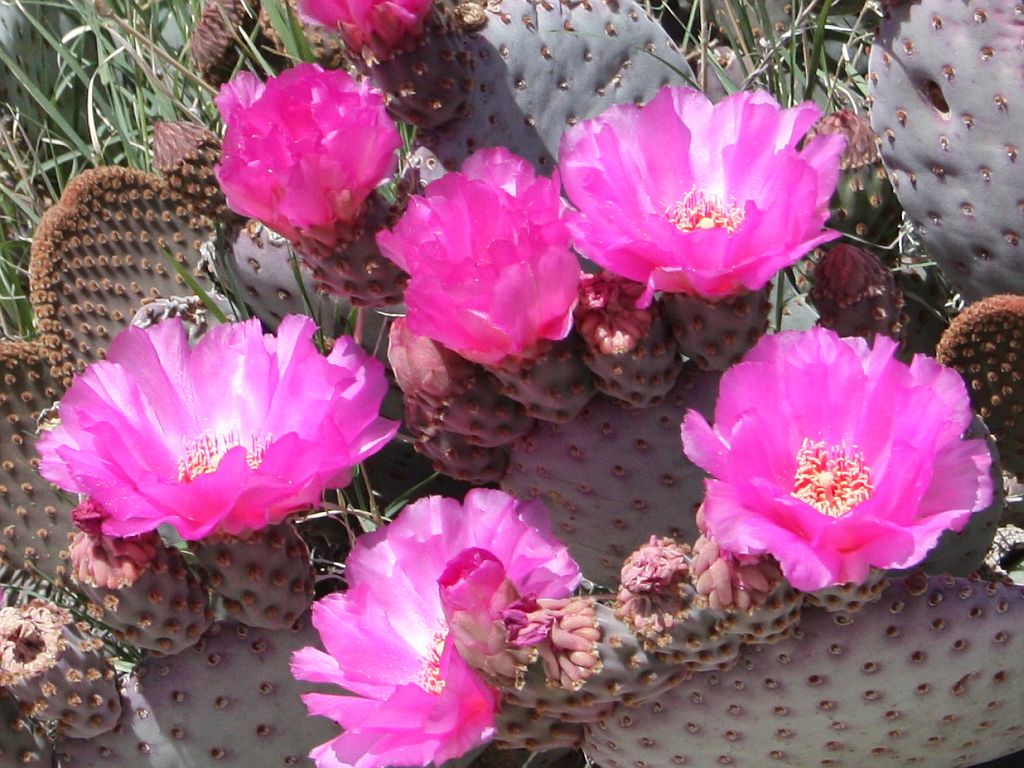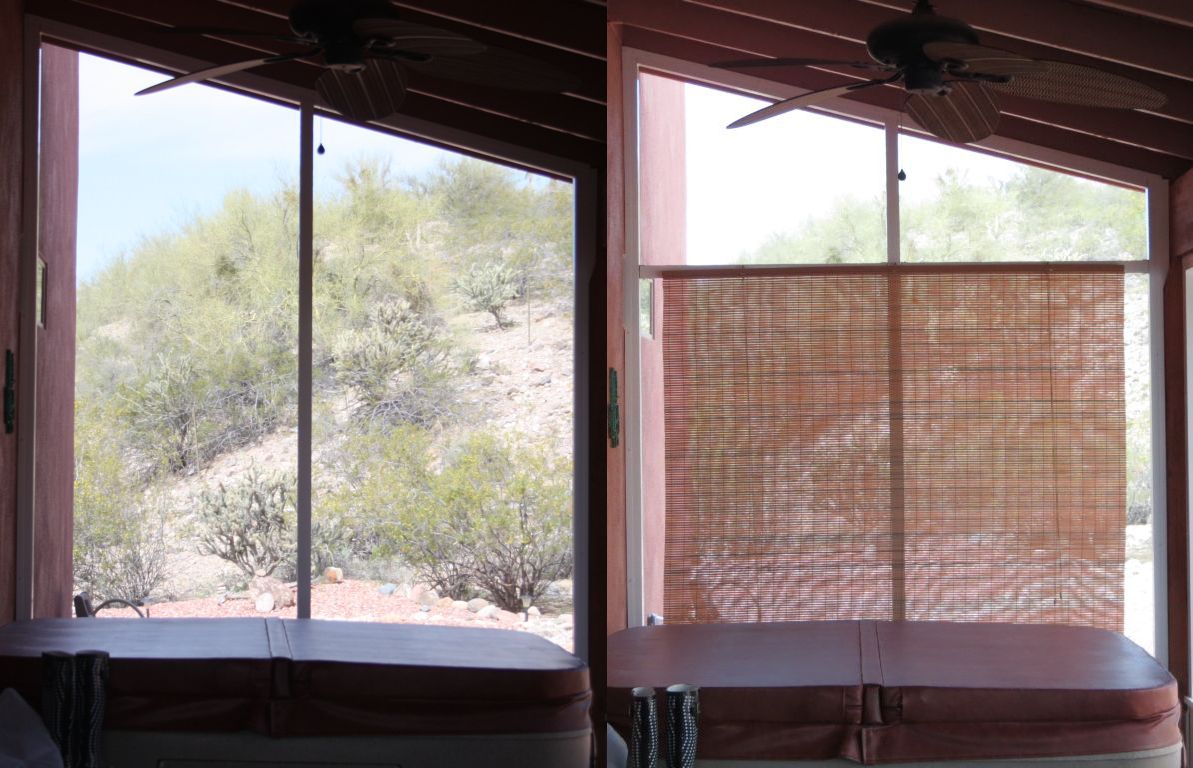 We have had our spa since last July. We enjoy it a lot, especially on the warmer days. If we get into the spa late in the afternoon, however, the sun going down on the west side of the house shines directly into the spa.
We have had our spa since last July. We enjoy it a lot, especially on the warmer days. If we get into the spa late in the afternoon, however, the sun going down on the west side of the house shines directly into the spa.
I asked the gentleman who installed the screen patio enclosure to come out and install a roll-down shade for us. He installed a couple more extruded aluminum supports (the same material used for the original patio) to hold the shade on the west end of the patio.
Image: Before and after – click to enlarge
I say temporary in the title since this shade is a cheap Chinese plastic shade that won’t last in the Arizona sun. We are already planning on getting a custom shade from one of the warehouse home improvement stores. We saw one we really liked at our friends’ house on the Colorado River. The supports installed today will be permanent.

